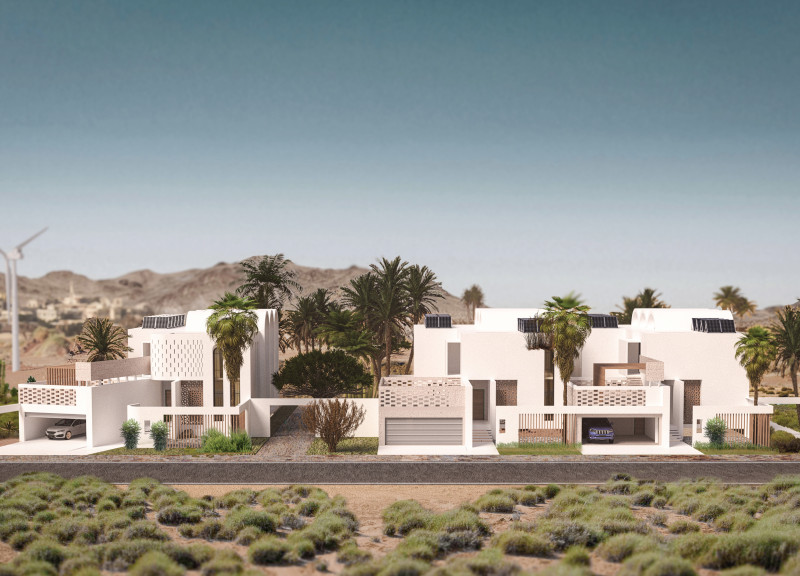5 key facts about this project
At its core, the project serves a multi-disciplinary function, positioned within a vibrant community likely characterized by a diverse demographic. It aims to foster interaction and engagement among users, thus creating a space that promotes community activities and social gatherings. The design encourages a fluid transition between indoor and outdoor areas, inviting natural light to permeate its spaces while providing ample opportunities for users to connect with nature.
The architectural language employed throughout the project is marked by clean lines, open layouts, and an emphasis on transparency. Large glass facades allow for visual connections to the exterior landscape, while also blurring the boundaries between inside and outside. This approach not only enhances the user experience but also aligns with sustainable design principles, utilizing passive solar strategies and minimizing reliance on artificial lighting.
Materials play a crucial role in the project’s design narrative. The selection of concrete, glass, and sustainable timber speaks to durability while promoting a sense of warmth and comfort within the spaces. Concrete serves as a structural and aesthetic foundation, offering both strength and a minimalist surface that can be both textured and smooth, depending on its finishing. Glass contributes to a sense of openness and accessibility, allowing views to the surrounding environment while providing the necessary thermal performance when properly shrouded. Sustainable timber, strategically used, adds a natural element that softens the rigidity of concrete, creating welcoming areas throughout the project.
Unique design approaches are evident in the way the structure responds to its geographical context. The orientation of the building is carefully considered to take advantage of prevailing winds and sunlight, promoting natural ventilation and light penetration. Additionally, landscape features are integrated into the design, enhancing not only aesthetic qualities but also environmental benefits such as stormwater management and biodiversity support.
The interior spaces are thoughtfully planned, prioritizing flexibility and adaptability to host a variety of functions, from workshops to exhibitions. The layout encourages user movement through open circulation paths, with thoughtfully placed gathering areas that invite pause and interaction. The use of natural materials is continued indoors, where finishes such as reclaimed wood and earth-toned tiles contribute to a calming atmosphere.
Additionally, the project places a strong emphasis on technological integration, incorporating smart building systems that optimize energy use and enhance the user experience. This forward-thinking approach demonstrates a commitment to sustainability, ensuring that the building can adapt to future advancements in technology and user needs.
In summary, this architectural design project offers a compelling example of contemporary architecture that marries function and aesthetics within a responsive framework to its environment. Its thoughtful material selection, innovative design approaches, and commitment to community interaction illustrate an understanding of current architectural trends while laying the groundwork for long-term viability. To delve deeper into the architectural plans, sections, designs, and underlying ideas that shape this project, readers are encouraged to explore the full presentation, gaining insights into the thoughtful details that define this unique architectural endeavor.


 Altankhuu Jorgutyn,
Altankhuu Jorgutyn, 























